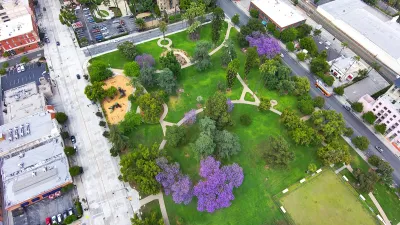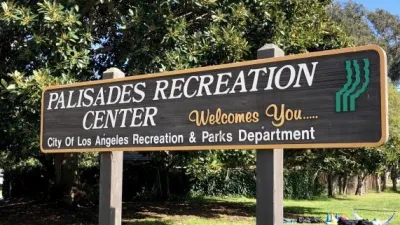In April 1992, L.A. erupted in a torrent of burning, looting, and rioting following the acquittal of three police officers charged in the beating of Rodney King. Josh Sides looks at how the city responded to those events and how it's changed since.
While the riots coincided with the acquittal of three of the four officers charged in the videotaped beating of King, they were the result of so much more.
As Sides asserts, "In the wake of the riots, planners, politicians, investors and community leaders offered up good-hearted and ambitious proposals to alleviate the chronic problems of unemployment, poverty, poor health, social isolation and physical abuse at the hands of law enforcement agents. But very few of these proposals produced fundamental changes in South Central L.A., especially for its African-American residents; and ultimately the most enduring change in the area over the past two decades - the transformation from an infamous black ghetto to a predominantly Latino immigrant community - was never planned. In many respects the story of South Los Angeles since 1992 is a cautionary tale, one that reminds us of the profound limits of planning and policy-making in regions of extraordinary demographic dynamism."
Sides looks at institutional efforts such as Rebuild LA, the "most high profile and ambitious response" that would "repeatedly overpromise and underachieve," and land use oriented initiatives such as liquor store abatement and the establishment empowerment zones, for signs of success and finds that demographic trends are the primary cause for the revitalization of the areas in which the riots were ignited.
FULL STORY: 20 Years Later: The Ambiguous Legacies of the Los Angeles Riots

Alabama: Trump Terminates Settlements for Black Communities Harmed By Raw Sewage
Trump deemed the landmark civil rights agreement “illegal DEI and environmental justice policy.”

Study: Maui’s Plan to Convert Vacation Rentals to Long-Term Housing Could Cause Nearly $1 Billion Economic Loss
The plan would reduce visitor accommodation by 25% resulting in 1,900 jobs lost.

Planetizen Federal Action Tracker
A weekly monitor of how Trump’s orders and actions are impacting planners and planning in America.

Wind Energy on the Rise Despite Federal Policy Reversal
The Trump administration is revoking federal support for renewable energy, but demand for new projects continues unabated.

Passengers Flock to Caltrain After Electrification
The new electric trains are running faster and more reliably, leading to strong ridership growth on the Bay Area rail system.

Texas Churches Rally Behind ‘Yes in God’s Back Yard’ Legislation
Religious leaders want the state to reduce zoning regulations to streamline leasing church-owned land to housing developers.
Urban Design for Planners 1: Software Tools
This six-course series explores essential urban design concepts using open source software and equips planners with the tools they need to participate fully in the urban design process.
Planning for Universal Design
Learn the tools for implementing Universal Design in planning regulations.
Caltrans
Smith Gee Studio
Institute for Housing and Urban Development Studies (IHS)
City of Grandview
Harvard GSD Executive Education
Toledo-Lucas County Plan Commissions
Salt Lake City
NYU Wagner Graduate School of Public Service




























